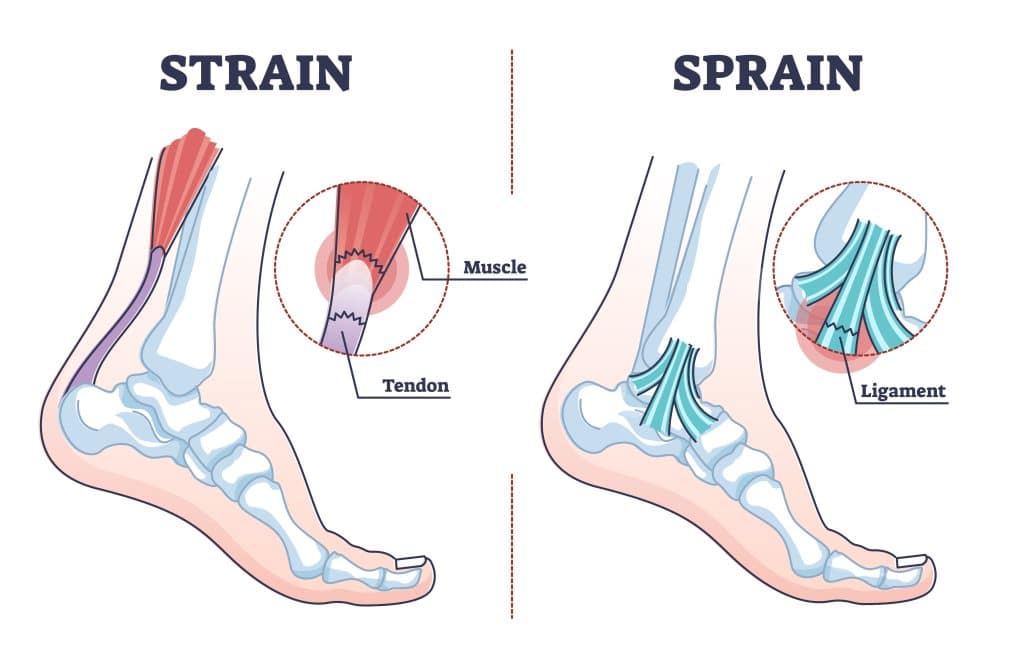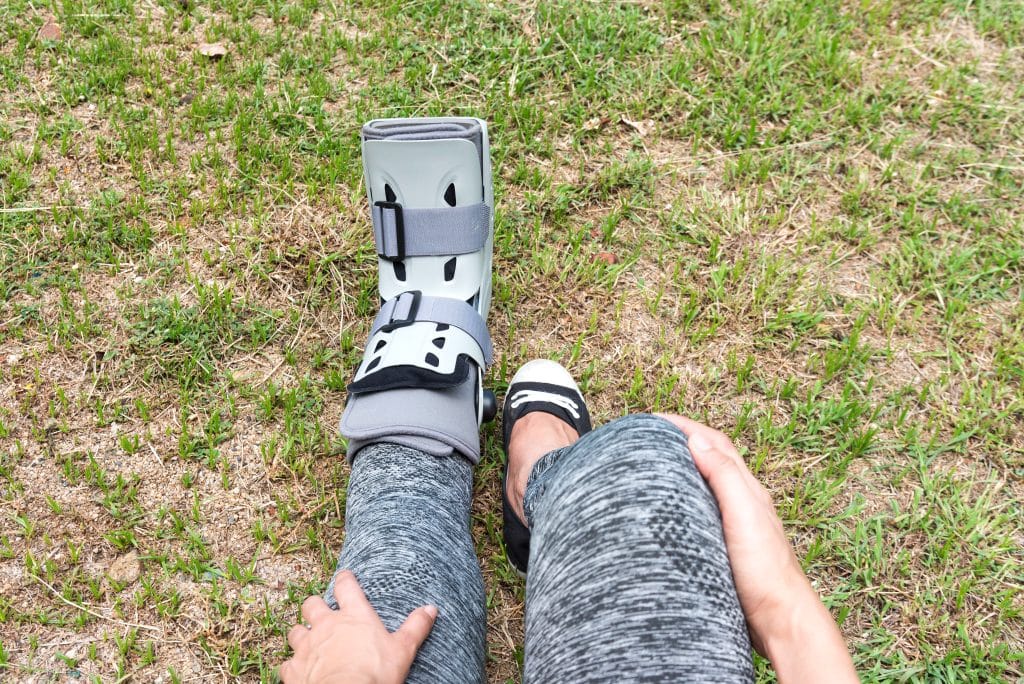How To Care for Foot Sprains
Pesky. That’s probably the best word to describe a foot sprain in terms of the way it affects daily life. They’re serious enough to sideline us from normal activity, but most are not so serious that we’re patient with their healing. That’s not always the case, however — as some foot sprains are severe enough to require surgery.
Sprains vs. Strains

Bones are connected to other bones by ligaments, and bones are connected to muscles by tendons. When we overstretch or tear a ligament, it’s called a sprain. Overstretching or tearing a tendon or muscle is called a strain. While these injuries typically present similarly, they affect different tissues of the body.
The most common cause of a foot sprain is twisting or turning the ankle or foot, which is also how ankle sprains generally occur. You could get a sprain from stepping awkwardly on uneven terrain (on a rocky trail, a hole in the yard, or while running, for example). Foot sprains may also occur if you step onto someone else’s foot during sports or hit your toe against something. Sometimes ligaments can even tear if you twist your body while your foot stays in place.
Can you still walk on a sprained foot?
A sprain in the foot, also called a mid-foot sprain, will be:
- Painful and tender
- Swollen
- Bruised
- Difficult to walk on
Your orthopedic specialist will use a physical exam and likely an X-ray to diagnose a sprain. They’ll want to ensure that other tissues or bones are damaged. They’ll likely give your sprain a grade of one, two, or three based on severity:
- Grade 1: Grade 1 sprains are minor and have small tears in the ligament(s).
- Grade 2: These are moderate sprains with large ligament tears.
- Grade 3: This is a severe sprain where the ligaments are completely torn or detached from the bone.
How do you treat a sprained foot?
If you want them to heal, foot sprains leave you little option other than taking a break. It’s important to stay off the injured foot and take steps to help decrease swelling and pain.

- Rest and keep your foot still
- Apply a wrapped ice pack for 15 to 20 minutes several times a day
- Elevate your foot while sitting and sleeping, ideally above your heart
- Use a compression sleeve or wrap as directed by your orthopedic foot specialist
- Wear a boot to help immobilize and protect your foot
- Get support from a cane or crutches, especially if you have a more severe sprain
- Take over-the-counter anti-inflammatories or pain relievers like ibuprofen (Advil, Motrin) or naproxen (Aleve) as direction
Once the swelling decreases and the pain lessens, slowly increase the time spent walking or doing light activities. Wear stable shoes with a stiffer sole for the most support. Your foot will be stiff and sore at first. As the ligaments get stronger, your foot will feel better.
How long does it take for foot sprains to heal?
Most minor and moderate foot sprains heal within 4 weeks if properly cared for. Severe foot sprains can take up to 8 weeks to heal. Occasionally, the most serious sprains require surgery to reduce the bone enough for the ligaments to heal. In these instances, healing may take up to 8 months. To avoid reinjury, always get a sign-off from your orthopedic foot specialist before returning to sports.
Also, revisit your orthopedic foot specialist if any of the following occur:

- Rest, ice, and compression are not helping
- Pain and swelling increase
- You cannot put any weight on your foot
- There’s pain directly in or over a bone
- You experience a tingling sensation or numbness
- Your toes are cold or pale
- Your foot looks deformed
- You have pain in your calf, thigh, groin, or the back of your knee
- Your leg or groin becomes red or swollen
- You develop a fever
Will a sprained foot heal on its own?
Yes and no. Some minor foot sprains require no specific medical intervention, though minimally, getting a proper diagnosis from an orthopedic foot specialist is best. Because foot sprains are painful, most people naturally avoid putting weight on their foot injury and choose to minimize their activities. If you continue to move as though you aren’t injured, you could cause further damage or substantially increase the time it takes to heal. If you have a severe foot sprain and do not receive proper care, it is unlikely to heal on its own.
To get answers regarding your foot injury or pain, please comment below or contact us.
Leave a Reply